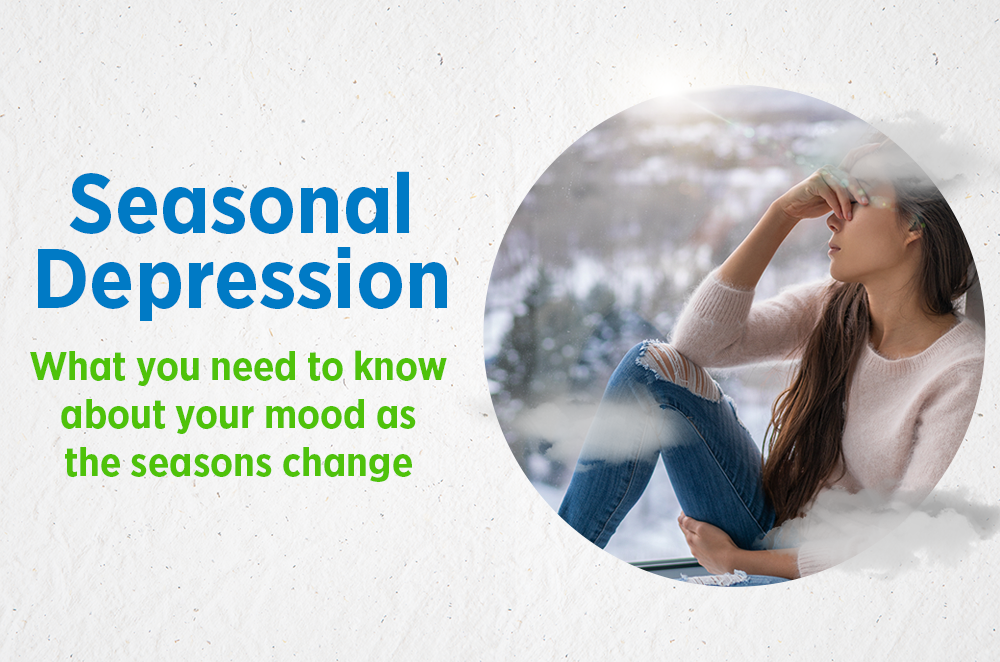Seasonal Depression
The transition from warmer weather to colder weather happens every year. We change out our wardrobes from summer to winter, make sure our homes are ready for colder weather, and even cook cold-weather recipes such as soup. During this change, we may also experience a change in our mental health. For some, seasonal depression is a challenge that you may deal with on a yearly basis but what exactly is it and what steps can you take to take to take control of it during the winter months?
What is Seasonal Depression?
Seasonal Depression, otherwise known as Seasonal Affective Disorder (SAD), is a change in your mental state caused by a change in the seasons. Like the seasons, SAD is often cyclical, beginning and ending around the same time every year making it predictable.
For most people experiencing SAD, symptoms usually begin in the late fall months and last all winter. It is possible to experience SAD in the spring and summer months. Some symptoms include:
- Having a feeling of sadness every day
- Loss of interest
- Feeling exhausted
- Cravings, overeating, and weight gain
- Having difficulty concentrating
- Feeling hopeless, worthless or guilty
Who is at High Risk?
Those who already may be struggling with mental health or are being treated for a mental health condition may be at high risk for SAD. Often, seasonal change can be a trigger for certain symptoms and increase symptoms. People with Bipolar Disorder may experience heightened anxiety and extreme forms of mania.
What Can Help?
When it comes to mental health, your doctor can work with you to provide a plan of how you can treat conditions that are causing the changes in mood. There are some activities you can do at home to boost your mood and help fight the symptoms of SAD.
- Use Light Therapy – Light Therapy mimics the sun’s light to help boost your mood. According to Harvard Medical, when exposed to a light box for 30 minutes a day, you can see an improvement in SAD symptoms. When our eyes perceive light, it sends a message to the part of our brain that is responsible for mood regulation and cognition.
- Go for a walk – An early morning walk can have the same benefits as light therapy. Sun exposure, no matter what the season is, is a great way to battle SAD. Additionally, a 30 minute walk can be considered a mood-boosting exercise.
Talk to your Doctor
It is important to note that it is normal to experience days when you are feeling down, sad, overwhelmed, or anxious. When these days are continuous and you have little to no relief from your symptoms, talk to your doctor. Together, you and your doctor can work on a treatment plan to ensure symptoms do not return or get worse.
An extreme and common symptom of depression is self-harm. If you are having thoughts of self-harm or you are feeling hopeless, contact the Suicide hotline at 988.
Learn more about our Behavioral Health Services at CCMH.
Disclaimer
The Comanche County Memorial Hospital website does not provide specific medical advice for individual cases. Comanche County Memorial Hospital does not endorse any medical or professional services obtained through information provided on this site, articles on the site or any links on this site.
Use of the information obtained by the Comanche County Memorial Hospital website does not replace medical advice given by a qualified medical provider to meet the medical needs of our readers or others.
While content is frequently updated, medical information changes quickly. Information may be out of date, and/or contain inaccuracies or typographical errors. For questions or concerns, please contact us at contact@ccmhhealth.com.
Resources:

